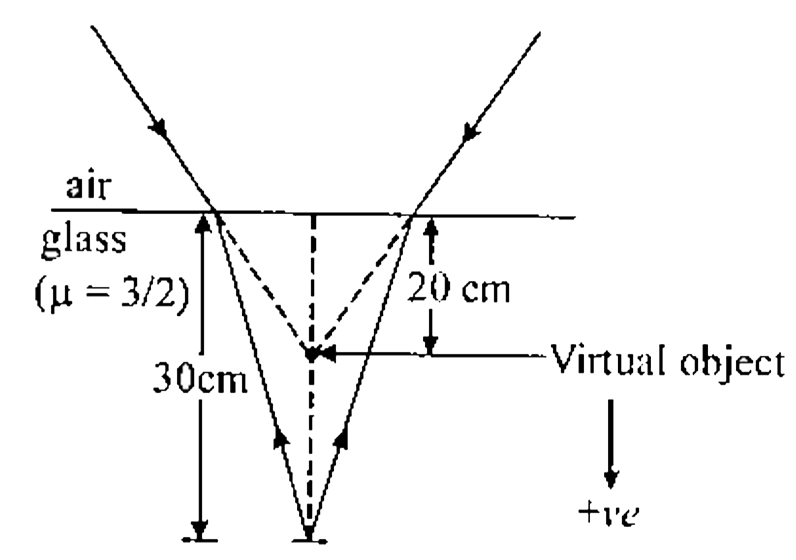A convergent beam is incident on two slabs placed in contact as shown in figure. Where will the rays finally converge?
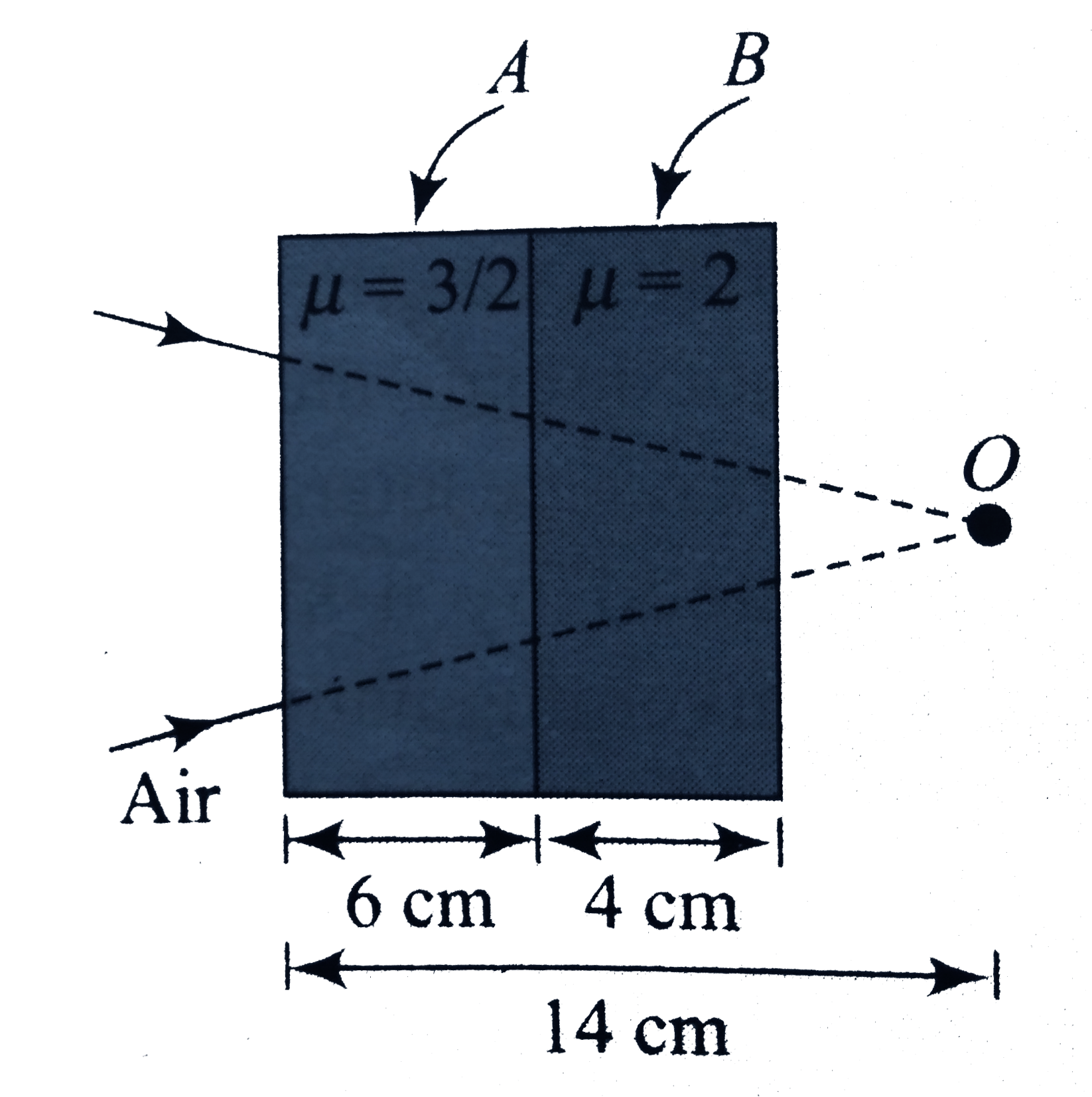
A ray of light from the object undergoes refraction at three interfaces: (1) Air-medium A, (2) Medium A-mudium B, (3) Medium B-air. The coordinate system for each of the interface is shown in the following figure.
Air-medium A interface:
d1=+14cm,μ1=1,μ2=1.5
As μ1d1=μ2d2 or d2=μ2μ1d1 , we get
d2=+21cm
Medium A-medium B interface:
d1=(21−6)=15cm,μ1=1.5,μ2=2
As μ1d1=μ2d2 or d2=μ2μ1d1 , we get
d2=+20cm
Medium B-air interface:
d1=+(20−4)=+16cm,μ1=2,μ2=1
As μ1d1=μ2d2 or d2=μ2μ1d1 , we get
d2=+8cm
Thus, the final image is 8cm in front of the medium B-air interface.
Method 2: Method of shifting
Net shifting S=6(1−13/2)+4(1−12)
=4cm
The shifting will be in the direction of ray travelling, i.e., towards right.
Hence, rays will coverge finally =14+4=18cm from left surface or 8cm from right surface.
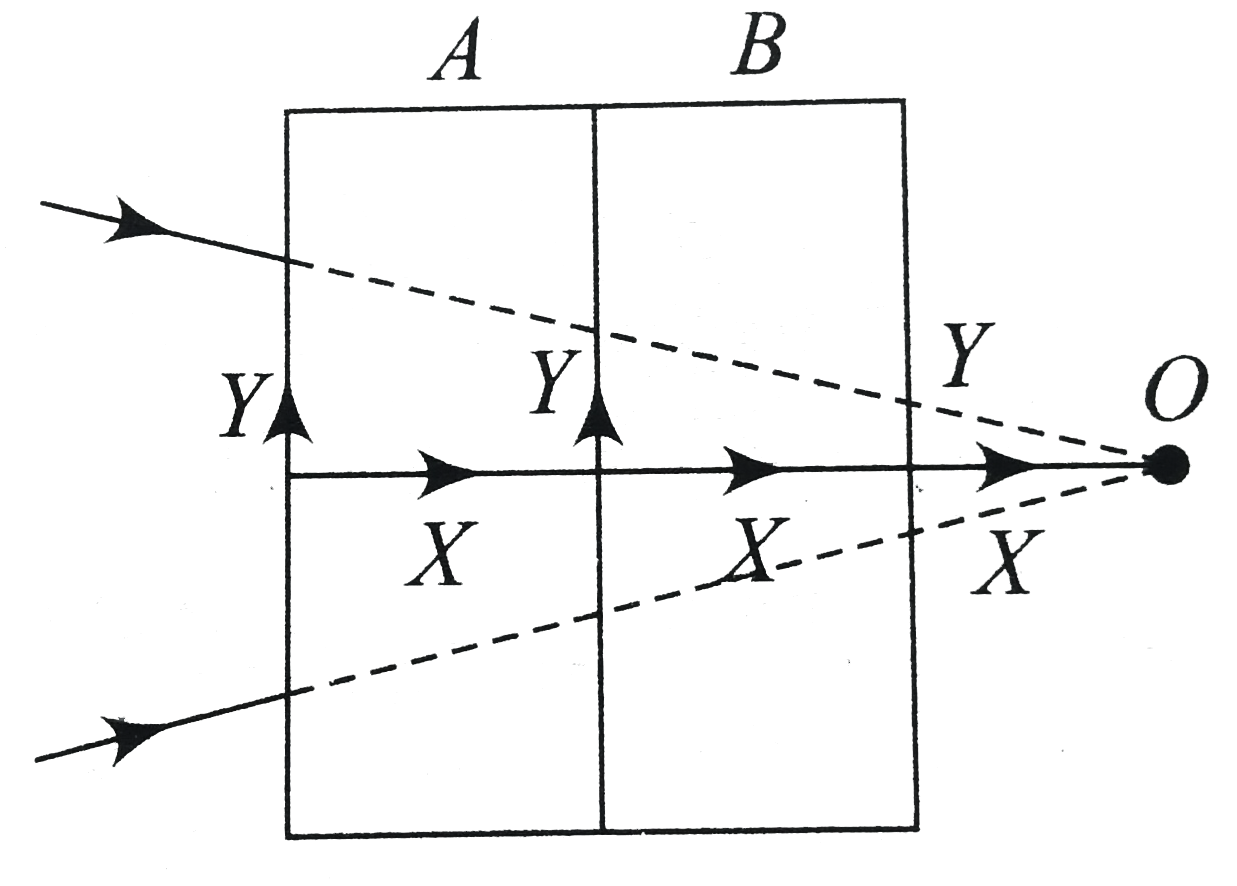
Topper's Solved these Questions
- BOOK - CENGAGE PHYSICSCHAPTER - GEOMETRICAL OPTICSEXERCISE - Exercise1.412videos
GEOMETRICAL OPTICS
- BOOK - CENGAGE PHYSICSCHAPTER - GEOMETRICAL OPTICSEXERCISE - Exercise1.522videos
GEOMETRICAL OPTICS
- BOOK - CENGAGE PHYSICSCHAPTER - GEOMETRICAL OPTICSEXERCISE - Exercise1.220videos
GEOMETRICAL OPTICS
- BOOK - CENGAGE PHYSICSCHAPTER - FRICTIONEXERCISE - QUESTION BANK1videos
FRICTION
- BOOK - CENGAGE PHYSICSCHAPTER - GRAVITATIONEXERCISE - Question Bank39videos
GRAVITATION
Similar Questions
Knowledge Check
- Question 1 - Select One or More
A convergent beam is incident on a convex mirror. Reflected light
Amay form a real imageBmay form a virtual imageCmust form a real imageDmust form a virtual image - Question 2 - Select One
A rays of light is incident on a thick slab of glass of thickness t as shown in figure. The emergent ray is parallel to the incident ray but displaced sideways by a distance d. If the angles are small then d is
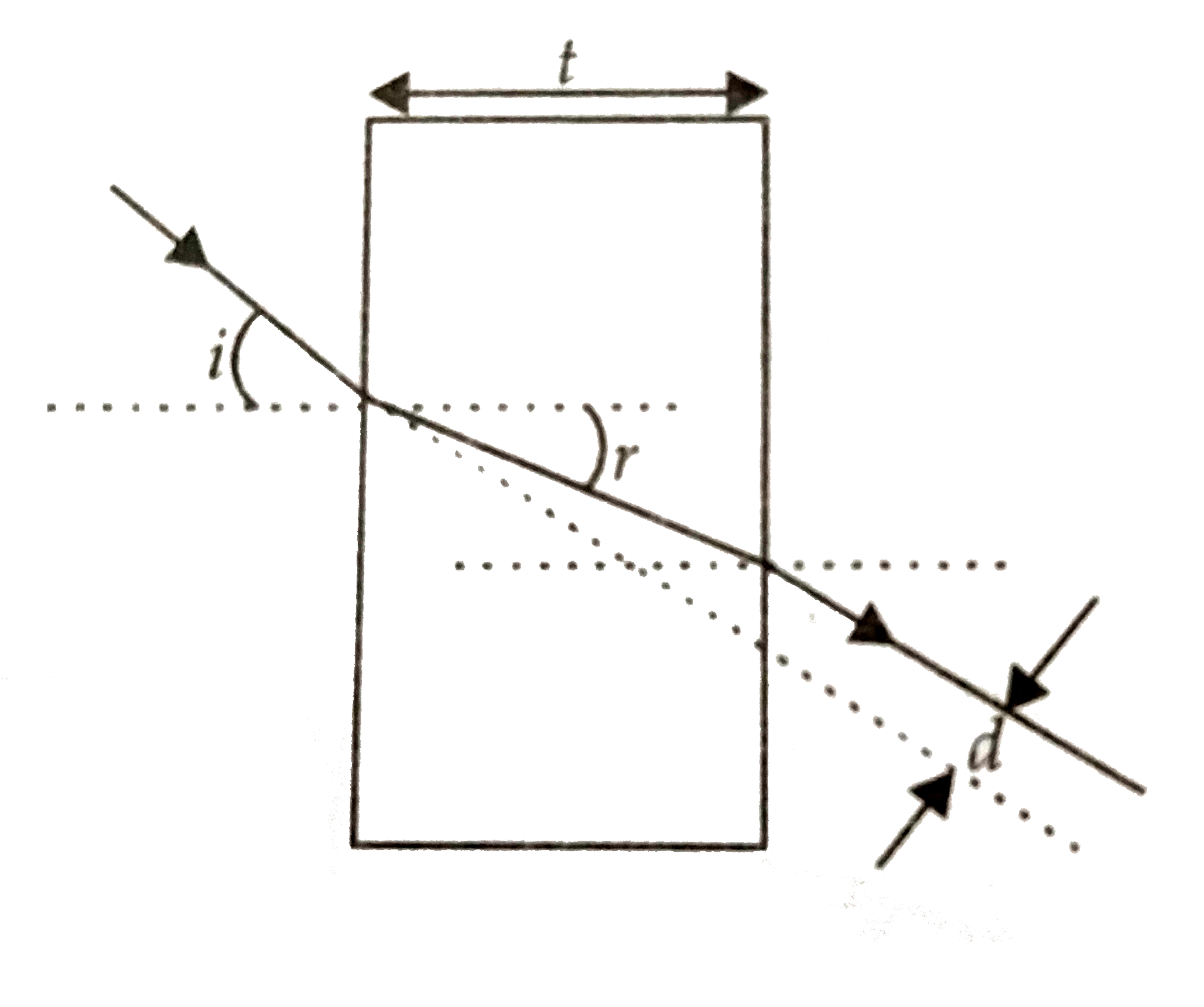 At(1+ir)Brt(1−ir)Cit(1−ri)Dt(1+ri)
At(1+ir)Brt(1−ir)Cit(1−ri)Dt(1+ri) - Question 3 - Select One

A ray is incident on interface of two media at critical angle as shown in the figure.Aif μ1 and μ2 both are increased by same amount the ray will suffer total internal reflection.Bif μ1 and μ2 both are increased by same amount the ray will suffer refraction and angle of refraction will be less then 90∘Cif μ1 and μ2 both are doubled ray will suffer total internal reflection.Dif μ1 ad μ2 both are doulbed ray will suffer refraction and angle of refraction will be less te 90∘
A converging beam of light is incident on a right angled isosceles prism as shown in the Figure. The marginal rays in the beam are incident at angle ±θ. The refractive index for the glass of the prism is μ=1.49(=1sin42°) . Find the maximum value of θ for which no light comes out of the hypotenuse surface.
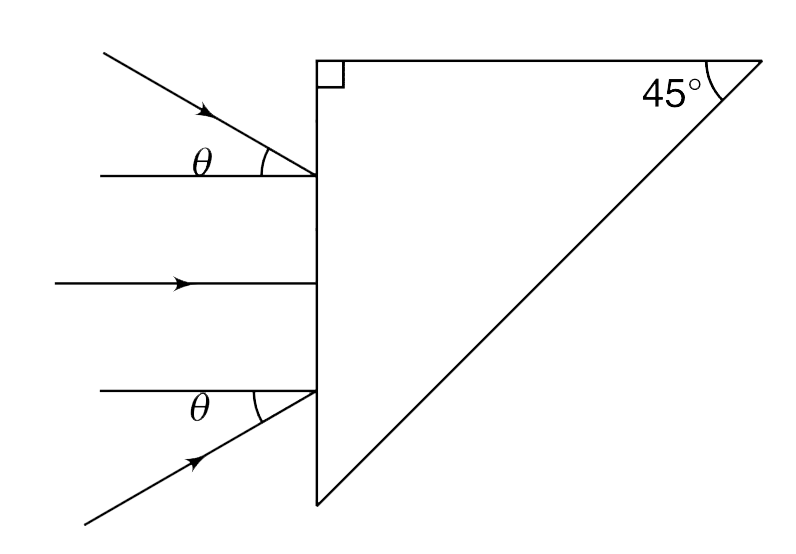 View Solution
View SolutionTwo identical thin isosceles prisms of refracting angle A and refractive index μ are placed with their bases touching each other and this system can collectively act as a crude converging lens. A parallel beam of light is incident on this system as shown in Figure. Find the focal length of this so called converging lens.
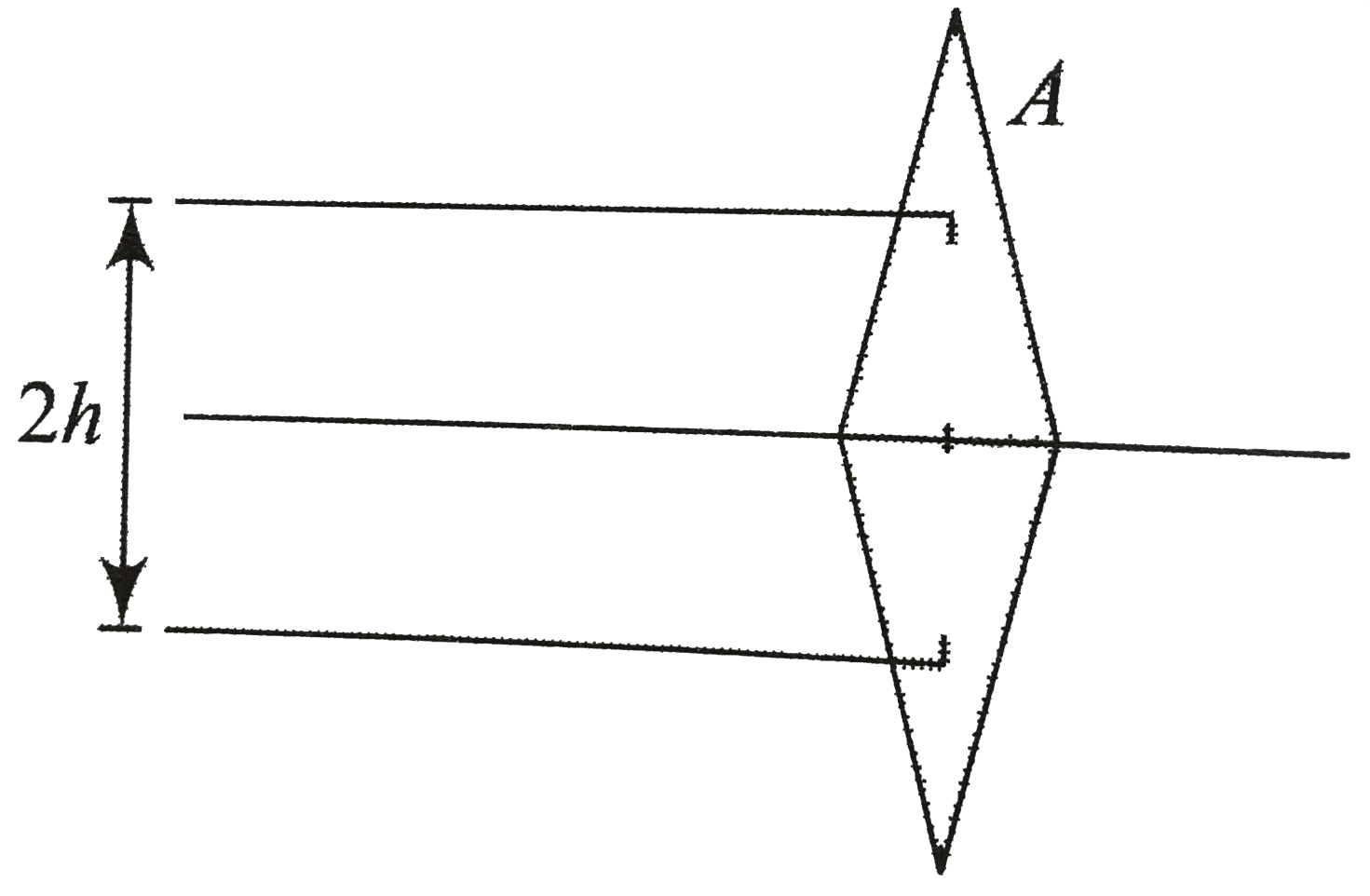 View Solution
View SolutionA converging set of ray, traveling from water to air, is incident on a plane interface. In the absence of the interface, the rays would have converged to a point O, 60 cm above the interface. However, dur to refraction the rays will bend. At what distance above the interface will the rays actually converge?
 View Solution
View SolutionFind the focal length of a convex mirror foron which convergent beam of light is incident and converge to a distance 12 cm from the pole of the mirror. An inverted image of the same size is formed coincident with the virtual object.
View SolutionA glass slab is placed in the path of convergent light. The point of convergence
View Solution


